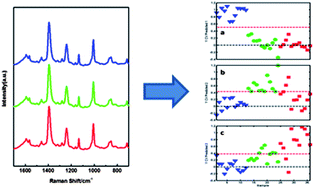
Spectroscopic analysis of mycolic acid profiles
In bacterial-based diagnostics, the bacteria can evolve over time and it is important to be able to differentiate between multiple strains. Mycobacterium tuberculosis, which is responsible for causing tuberculosis (TB), has multiple drug-resistant strains. The most accurate method to identify toxic strains of TB, high performance liquid chromatography (HPLC), requires fluorescent labeling and extraction of the mycolic acids, from the outer membrane of the bacteria.
Researchers at the University of Georgia in the United States wanted a more direct detection method and approached this problem in two important aspects. They began by identifying the high molecular weight lipids within the bacteria using HPLC, gas chromatography (GC), and nuclear magnetic resonance (NMR) for several TB bacterial strains. NMR in particular was very important in identifying the structures of mycolic acids. Using the information from these techniques and surface enhanced Raman spectroscopy (SERS), they chemically classified the mycolic acid from both TB and non-TB strains. The SERS spectra underwent further statistical analysis and accurately identified different strains of TB label-free and with high sensitivity.
To know more about this research, click on the link below. This paper will be free to read for the next three weeks.
Identification of mycobacteria based on spectroscopic analyses of mycolic acid profiles
Omar E. Rivera-Betancourt, Russell Karls, Benjamin Grosse-Siestrup, Shelly Helms, Frederick Quinn and Richard A. Dluhy
Analyst, 2013,138, 6774-6785
DOI: 10.1039/C3AN01157G










